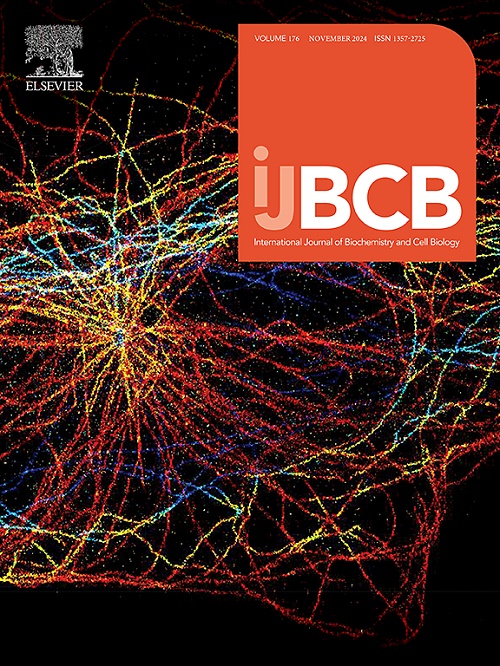27P silk bioactive peptides mediate multifaceted regulation of collagen and support balance in fibroblast subpopulations
IF 2.8
3区 生物学
Q2 BIOCHEMISTRY & MOLECULAR BIOLOGY
International Journal of Biochemistry & Cell Biology
Pub Date : 2025-06-19
DOI:10.1016/j.biocel.2025.106821
引用次数: 0
Abstract
Fibroblasts play a key role in maintaining skin structure and immune balance, but factors like aging, stress, and chronic inflammation can weaken their function, leading to collagen loss, thinning skin, and increased inflammation. Traditional collagen boosters like retinoic acid (RA), vitamin C (VC), hyaluronic acid (HA), and transforming growth factor beta (TGFβ) have drawbacks, including poor absorption, instability, and irritation.
Studies reveal that Silk Bioactive Peptide (27 P peptide) binds to epidermis and dermal fibroblasts, enhancing prolonged pro-collagen 1 (pro-C1) secretion in 3D and 2D models. De-novo collagen synthesis by 27 P peptide, likely regulated at the translational level, resulted in elevated collagen deposition and matrix remodeling up to 120 h. Combination of VC and 27 P peptide rescues VC-induced intracellular collagen depletion. Unlike TGFβ and RA, 27 P peptide maintains balance between fibroblast subpopulations, without inducing markers of fibrosis or inflammation. Together, 27 P peptide presents as a promising alternative to effectively promote collagen production, fibroblast homeostasis and skin health.
p丝生物活性肽介导成纤维细胞亚群胶原蛋白和支持平衡的多方面调节。
成纤维细胞在维持皮肤结构和免疫平衡方面发挥着关键作用,但衰老、压力和慢性炎症等因素会削弱它们的功能,导致胶原蛋白流失、皮肤变薄和炎症增加。传统的胶原蛋白促进剂,如维甲酸(RA)、维生素C (VC)、透明质酸(HA)和转化生长因子β (TGFβ)都有缺点,包括吸收差、不稳定和刺激。研究发现,在3D和2D模型中,丝绸生物活性肽(27P肽)与表皮和真皮成纤维细胞结合,延长了原胶原1 (pro-C1)的分泌。27P肽的De-novo胶原合成可能在翻译水平受到调节,导致胶原沉积和基质重塑升高至120h。VC和27P肽联合使用可挽救VC诱导的细胞内胶原耗竭。与TGFβ和RA不同,27P肽维持成纤维细胞亚群之间的平衡,不诱导纤维化或炎症标志物。总之,27P肽是有效促进胶原蛋白生成、成纤维细胞稳态和皮肤健康的一种有前景的替代方法。
本文章由计算机程序翻译,如有差异,请以英文原文为准。
求助全文
约1分钟内获得全文
求助全文
来源期刊
CiteScore
8.10
自引率
0.00%
发文量
124
审稿时长
19 days
期刊介绍:
IJBCB publishes original research articles, invited reviews and in-focus articles in all areas of cell and molecular biology and biomedical research.
Topics of interest include, but are not limited to:
-Mechanistic studies of cells, cell organelles, sub-cellular molecular pathways and metabolism
-Novel insights into disease pathogenesis
-Nanotechnology with implication to biological and medical processes
-Genomics and bioinformatics

 求助内容:
求助内容: 应助结果提醒方式:
应助结果提醒方式:


